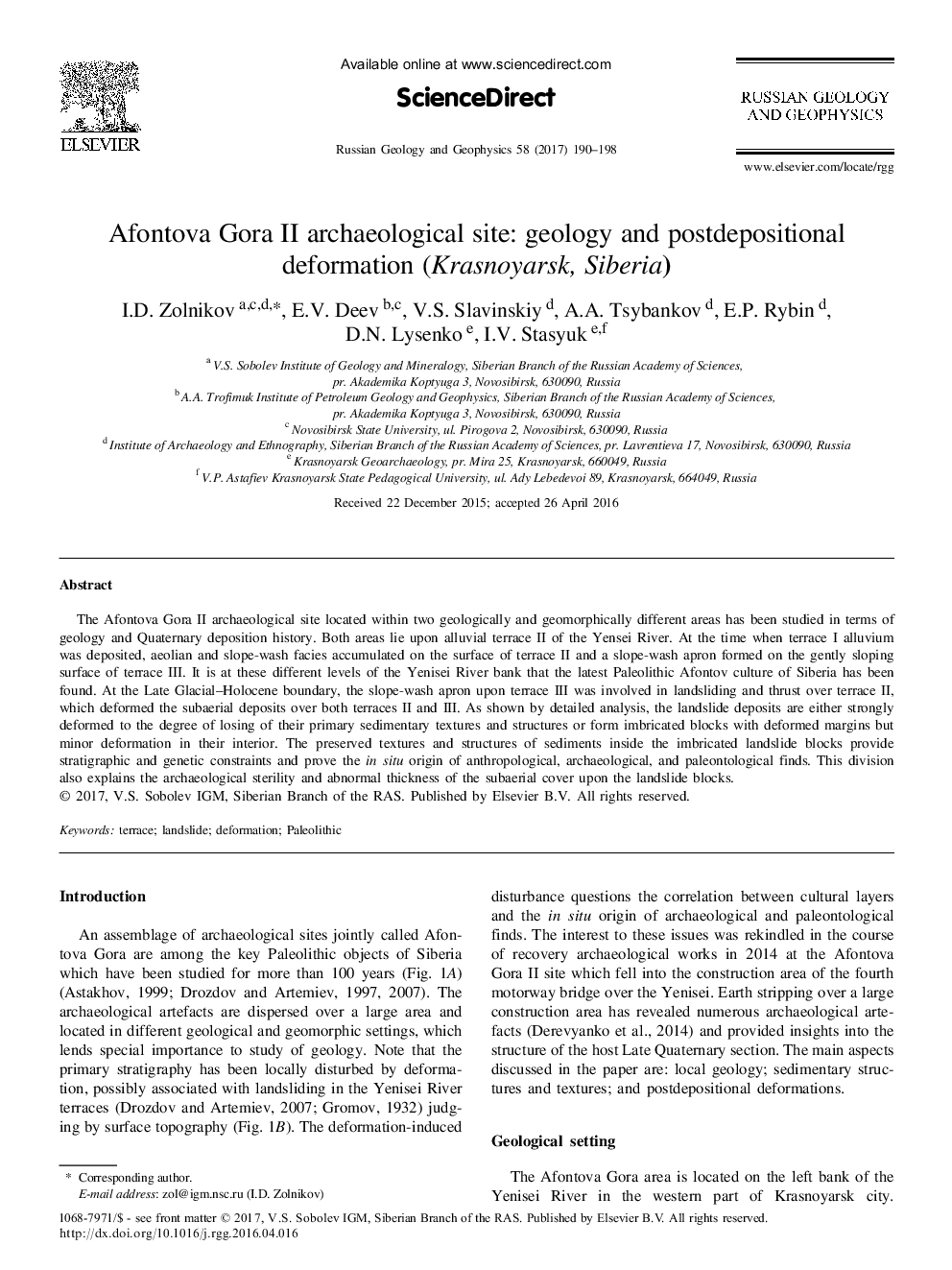| Article ID | Journal | Published Year | Pages | File Type |
|---|---|---|---|---|
| 5787027 | Russian Geology and Geophysics | 2017 | 9 Pages |
Abstract
The Afontova Gora II archaeological site located within two geologically and geomorphically different areas has been studied in terms of geology and Quaternary deposition history. Both areas lie upon alluvial terrace II of the Yensei River. At the time when terrace I alluvium was deposited, aeolian and slope-wash facies accumulated on the surface of terrace II and a slope-wash apron formed on the gently sloping surface of terrace III. It is at these different levels of the Yenisei River bank that the latest Paleolithic Afontov culture of Siberia has been found. At the Late Glacial-Holocene boundary, the slope-wash apron upon terrace III was involved in landsliding and thrust over terrace II, which deformed the subaerial deposits over both terraces II and III. As shown by detailed analysis, the landslide deposits are either strongly deformed to the degree of losing of their primary sedimentary textures and structures or form imbricated blocks with deformed margins but minor deformation in their interior. The preserved textures and structures of sediments inside the imbricated landslide blocks provide stratigraphic and genetic constraints and prove the in situ origin of anthropological, archaeological, and paleontological finds. This division also explains the archaeological sterility and abnormal thickness of the subaerial cover upon the landslide blocks.
Related Topics
Physical Sciences and Engineering
Earth and Planetary Sciences
Geology
Authors
I.D. Zolnikov, E.V. Deev, V.S. Slavinskiy, A.A. Tsybankov, E.P. Rybin, D.N. Lysenko, I.V. Stasyuk,
